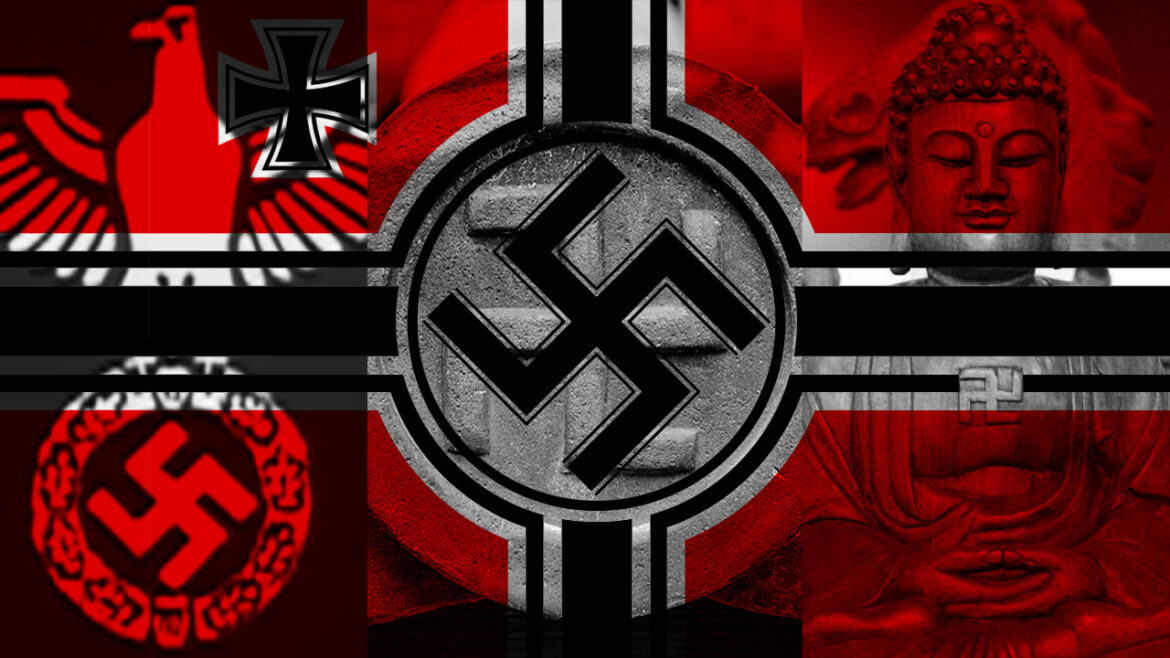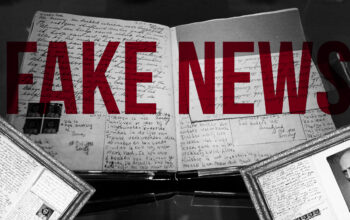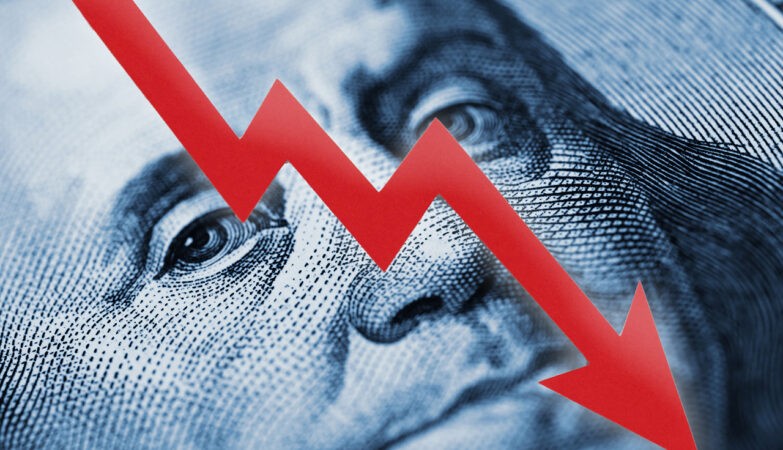Ever since the Second World War, the symbol of the Swastika was transmuted and became a symbol of discrimination and slaughter, a product of Adolf Hitler’s regime.
Many of us associate the swastika with destruction, hatred, and cruelty, particularly when it became the symbol of evil and fear for the countless Jews who suffered and died during the Holocaust.
When Hitler became the leader of the propaganda for the National Socialist Party, he realized that they needed a powerful symbol to set it apart from rival parties.
In his autobiographical manifesto Mein Kampf, he stated that he wanted an insignia that would symbolize their struggle and be “effective as a large poster.” He searched for a design that would appeal to the masses.
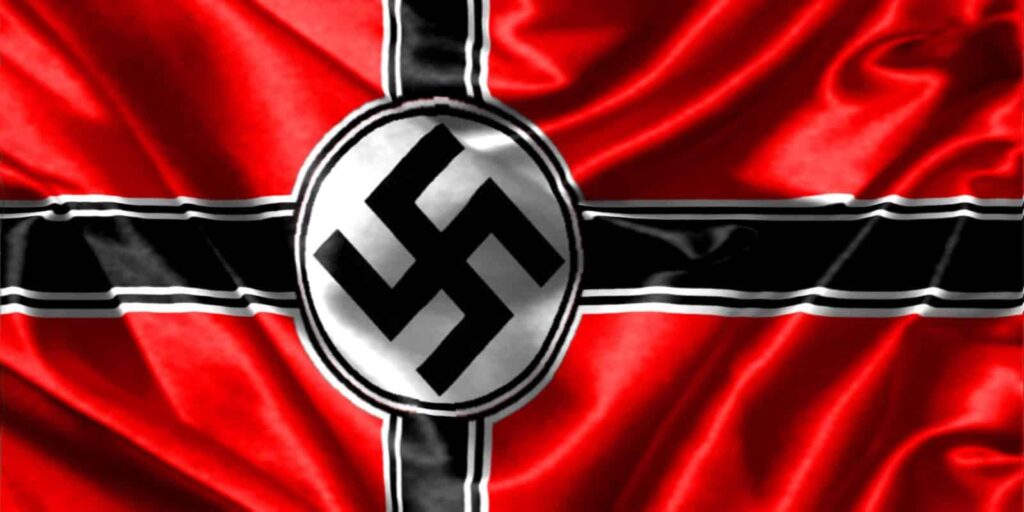
peopleofgaming
It was placed over a red background to “win over the worker.”
Hitler wrote:
“We National Socialists regarded our flag as being the embodiment of our party programme. The red expressed the social thought underlying the movement. White the national thought. And the swastika signified the mission allotted to us—the struggle for the victory of Aryan mankind and at the same time the triumph of the ideal of creative work which is in itself and always will be anti-Semitic.”
The Aryan nomads of India reportedly use the swastika in the Second Millennium B.C. Hitler firmly believed that the symbol had been “eternally anti-Semitic.”
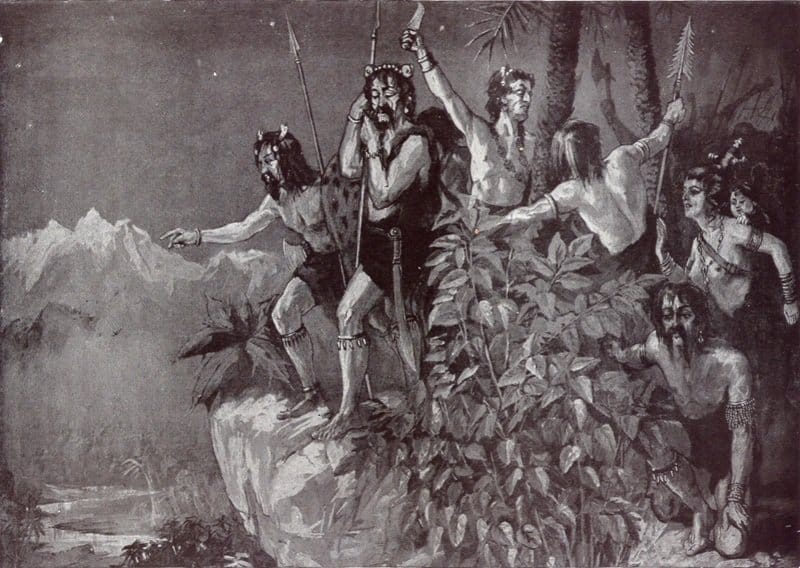
Wikipedia
In Germany, where neo-Nazis also march, it’s illegal to display the swastika, and citizens there initiate private or neighbourhood efforts to remove it from graffiti and other street art.
But attempts to eradicate the swastika can sometimes misfire, as happened recently in Quebec. Corey Fleischer, known by the Instagram handle erasinghate, was stopped by police when he tried to blot out swastikas embossed on salvaged anchors on public display in the small St. Lawrence River community of Pointes-des-Cascades.

A Diverse and Ancient History
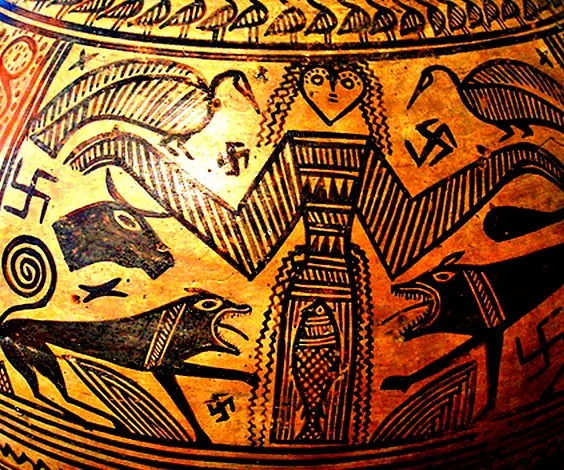
RichardCassaro.com
The swastika wasn’t always an odious symbol of hate. Far from it. Some historians say that the swastika is of Sanskrit origin.

According to experts, the symbol of the Swastika migrated from India –through the Tartar Mongoodi route via Kamchatka to the Americas, the reason why the symbol can be found among the Aztec and Maya civilizations.
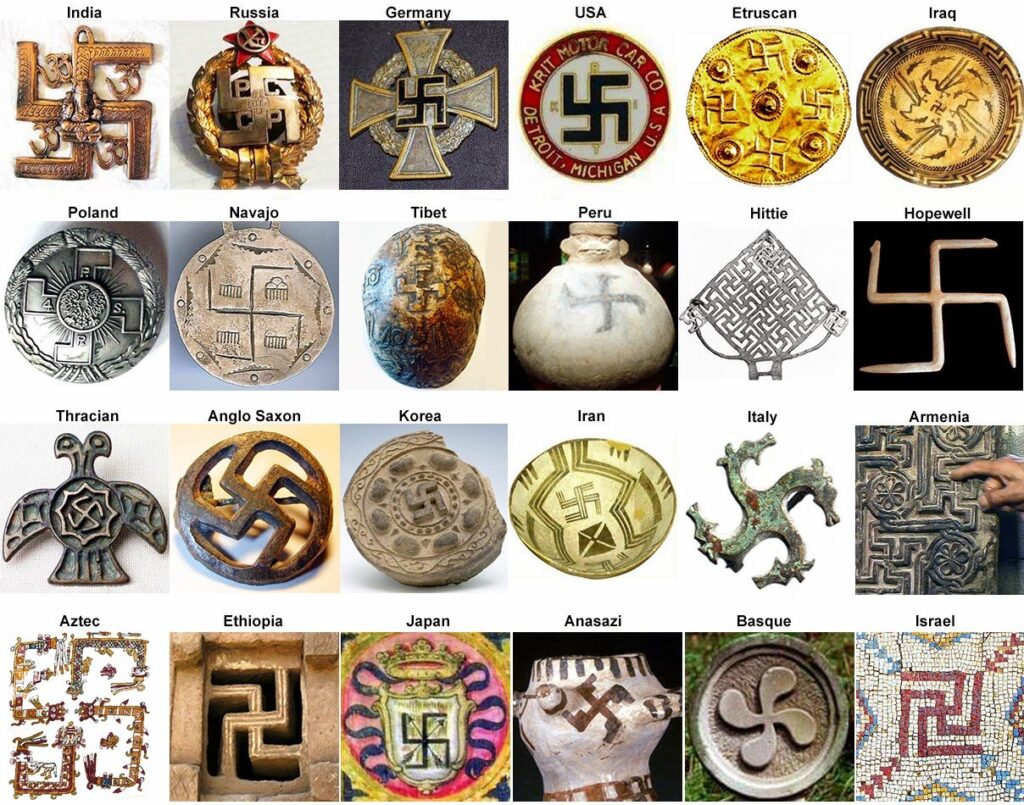
But the swastika’s meaning changes depending on how it is drawn.
The right-hand swastika is one of the 108 symbols of the god Vishnu as well as a symbol of the sun and of the sun god Surya. The symbol imitates in the rotation of its arms the course taken daily by the sun, which appears in the Northern Hemisphere to pass from east, then south, to west. (It is also a symbol of the sun among Native Americans.)

The left-hand swastika (called a sauvastika) usually represents the terrifying goddess Kali, night and magic. However, this form of the swastika is not “evil” and it is the form most commonly used in Buddhism.

Ancient cultures have commonly used symbols that have a double meaning. For instance:

Flickr

Wikipedia
The earliest swastika ever found was uncovered in Mezine, Ukraine, carved on an ivory figurine which dates back an incredible 12,000 years.
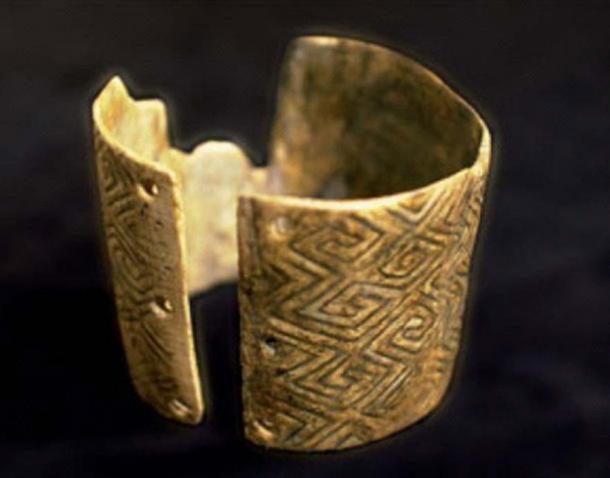
Encyclopedia of Ukraine
One of the earliest cultures that are known to have used the Swastika was a Neolithic culture in Southern Europe, in the area that is now Serbia, Croatia, Bosnia and Herzegovina, known as the Vinca Culture, which dates back around 8,000 years.
They also found evidence of the insignia dating back to 4,000 B.C. They were etched on the pottery and coins used in ancient Troy.
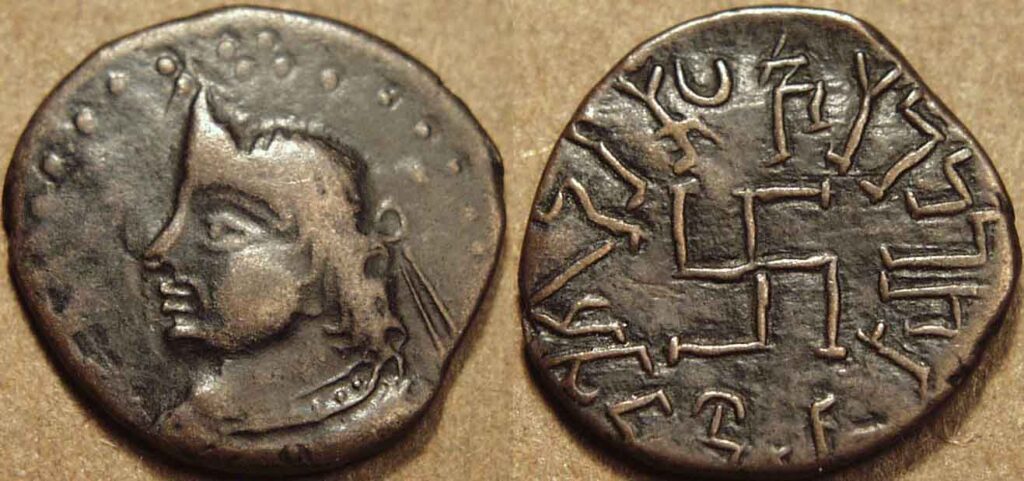
coinindia.com
Some artifacts recovered from the ancient Druids, Celts, Native Americans, and Nordic tribes indicate that they too, adopted the symbol.
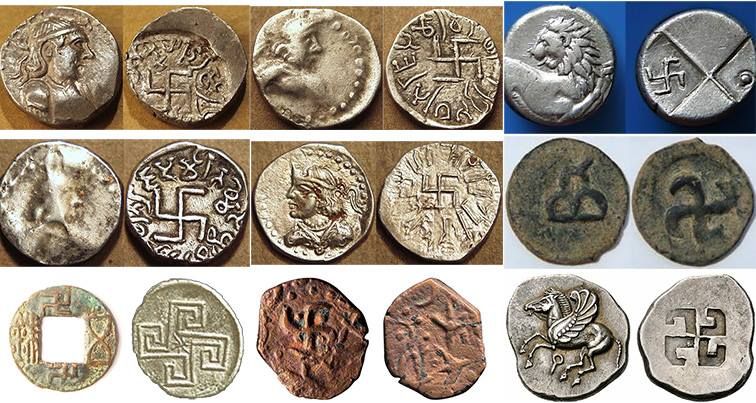
Margarit Ralev/logoblink.com
Hindus and Buddhists in India and Asian countries such as China and Japan also used the swastika. They believed that it symbolized good fortune, prosperity, and eternity.
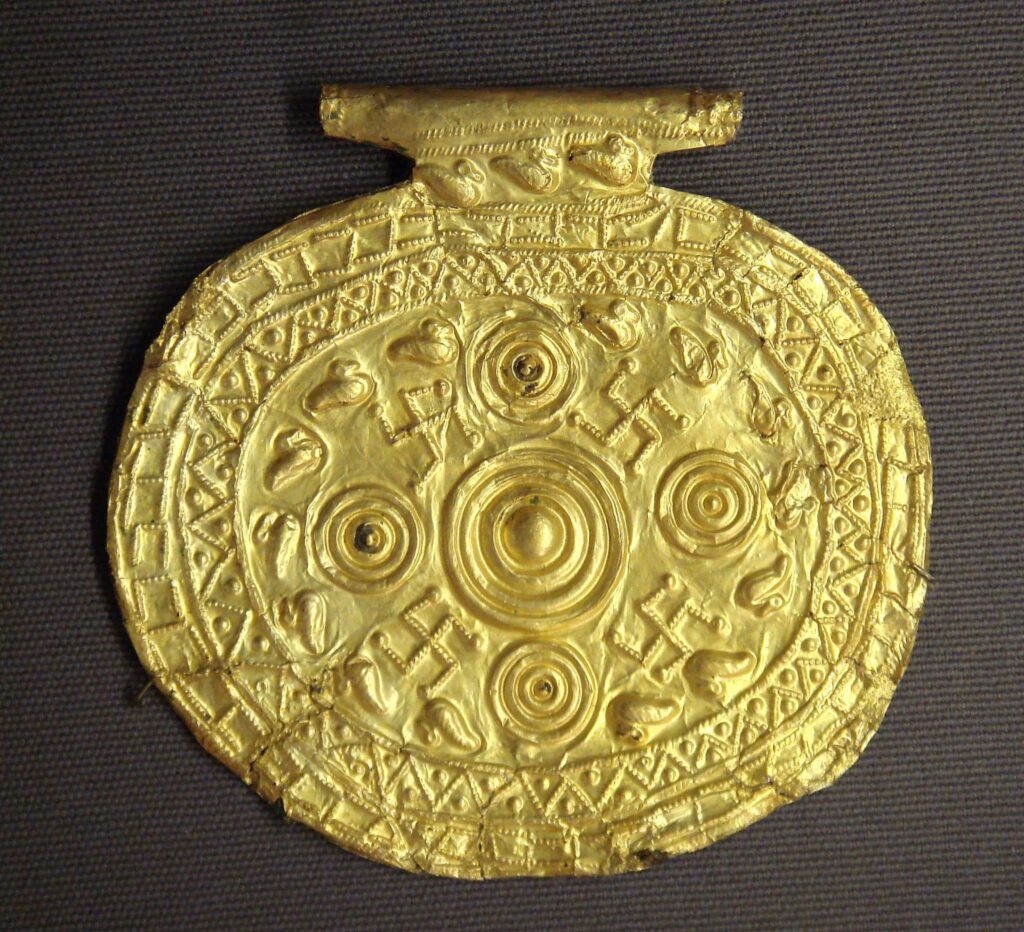
Louvre Museum
The Chinese call the swastika “Wan” while the Japanese call it “Manji”. In Germany, they call it “Hakenkreuz”, in England “Fylfot”, in ancient Greece it’s either “Tetraskelion” or “Tetragammadion.”
It reached other parts of the world through the Western Land route arriving in Finland, Scandinavia, British Highlands and parts of Europe where the symbol is found in a number of different adaptations.
It once epitomized strength, power, good luck, and the sun—the complete opposite of how we perceive it now.
Apart from being a religious symbol, it was used as a decorative symbol in numerous cultures since at least the Neolithic period. The swastika is most commonly used as a charm to bring good fortune and positive energy depicted with the “arms” of the Swastika bent clockwise.

Shutterstock
As a symbol, the swastika’s power resides in its simplicity and balance. Graphic designer Steven Heller notes that “the swastika’s geometric purity allows for legibility at any size or distance, and when on its axis, the whirling square gives the illusion of movement.”
Its form, according to Heller, is “sublime,” so it’s no wonder that it has found a place in so many cultures.
In Buddhism, the swastika is thought to represent the footprints of the Buddha. It takes on a liturgical function in Jainism, and in Hinduism the clockwise symbol (the swastika as we know it, with the arms pointing right) and the counterclockwise symbol, the sauvistika, pair up to portray opposites such as light and darkness.
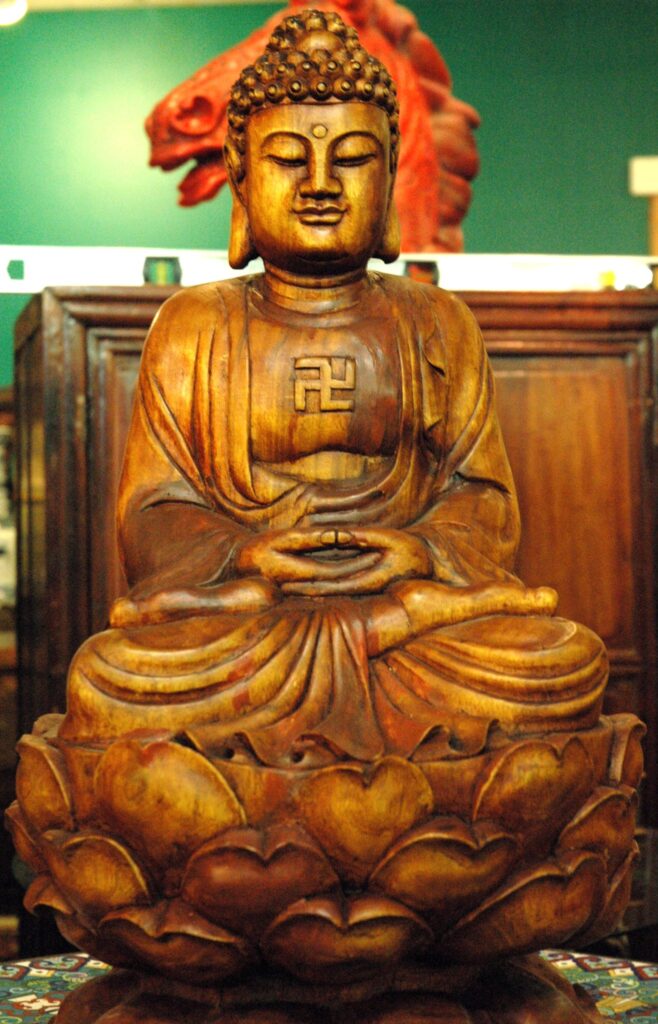
Flickr
On the walls of the Christian catacombs in Rome, the symbol of the Swastika appears next to the words “ZOTIKO ZOTIKO” which means “Life of Life”. It can also be found on the window openings of the mysterious Lalibela Rock churches of Ethiopia, and in various other churches around the world.
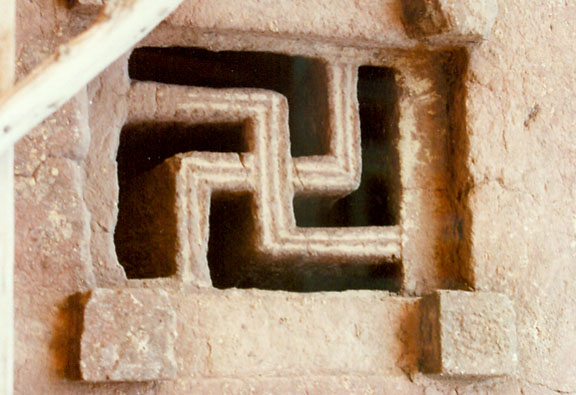
Wikimedia Commons
In Mesopotamia it was used on coins, and the Navajo nation wove it into blankets. It has been found on ancient pottery in Africa and Asia. It was sometimes used as a single element, but often it was repeated as a series of interlocking swastikas to form a border on a garment or in architecture, as was common in Roman times.
It made an appearance in Germanic and Viking cultures, and you can find it in medieval churches and religious vestments across Europe.

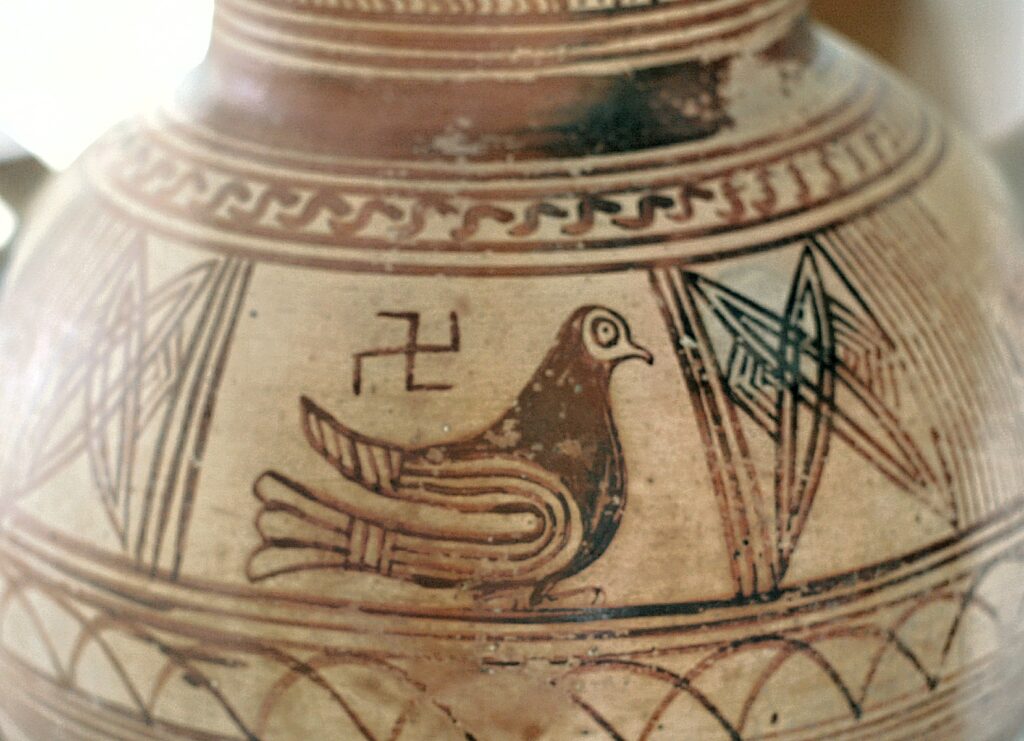
In Nordic Myths, Odin is represented passing through space as a whirling disk or swastika looking down through all worlds. In North America, the swastika was used by the Navajos. In Ancient Greece, Pythagoras used the Swastika under the name ‘Tetraktys’ and it was a symbol linking heaven and earth, with the right arm pointing to heaven and its left arm pointing to Earth.
It has been used by the Phoenicians as a symbol of the Sun and it was a sacred symbol used by the priestesses.
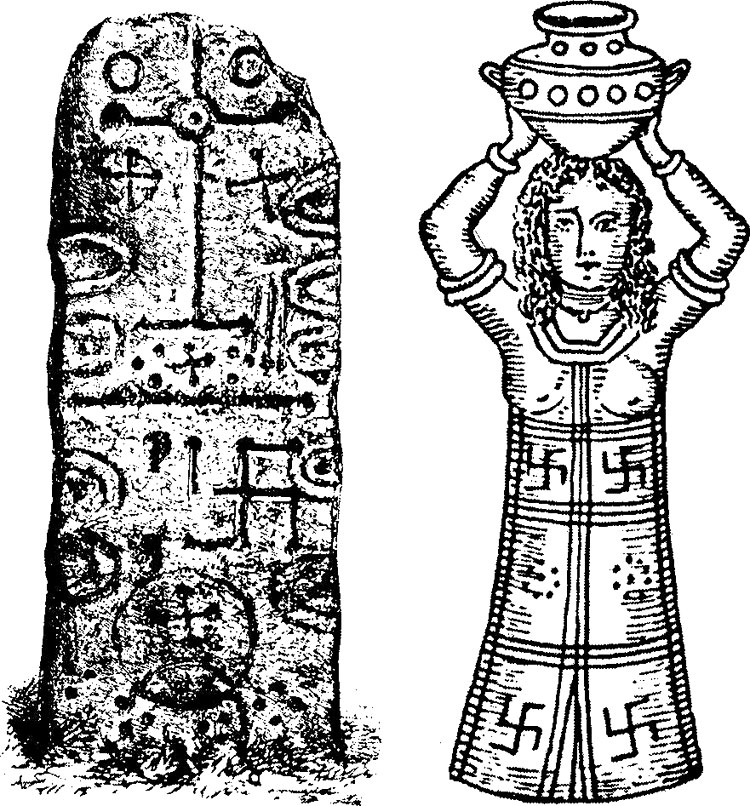
bibliotecapleyades.net
In the late 19th and early 20th centuries, the swastika became well-established in western culture as a good luck symbol, similar to a four-leaf clover or a horseshoe.
Companies used it as logo; it adorned birth announcements and greeting cards. American Boy Scouts could get a swastika badge, and the Girls’ Club published a magazine called The Swastika. Finland, Latvia and the United States have all used it as a military insignia.
In Canada, a mining community in northern Ontario was named Swastika, just as you might name a town New Hope or Bounty. Windsor, N.S., and Fernie, B.C., both had hockey teams called the Swastikas. In 1931, Newfoundland issued a $1 stamp commemorating important moments in transatlantic aviation; each corner had a swastika.
The late 19th century saw the newly formed German empire caught up in an era of unrestrained nationalism. Some nationalists sought to prove German racial superiority, subscribing to a now discredited idea that an ancient Aryan race — the original Indo-Europeans — were their ancestors. Evidence was needed to connect the Germans with the Aryans.
It reached other parts of the world through the Western Land route arriving in Finland, Scandinavia, British Highlands and parts of Europe where the symbol is found in a number of different adaptations.
“After dividing the world into nine quadrants into which Swastika moved from India, we retraced its footprints and have been able to graphically prove our claim through ancient seals, inscriptions, imprints, and religious symbolism in these countries. We will reveal it in great detail,” Sen said.
Today, the Swastika is firmly rejected in society because people have absolutely no idea the true meaning of the symbol. It is a hijacked symbol.
It inspired Schopenhauer, Friedrich Nietzsche, and their progeny, Adolf Hitler, who started an inverted agenda of anti-Semitism based on a falsified Aryan invasion myth through seven years of war, terror, corruption, and extermination,” Sen said.
A Comet In the Sky
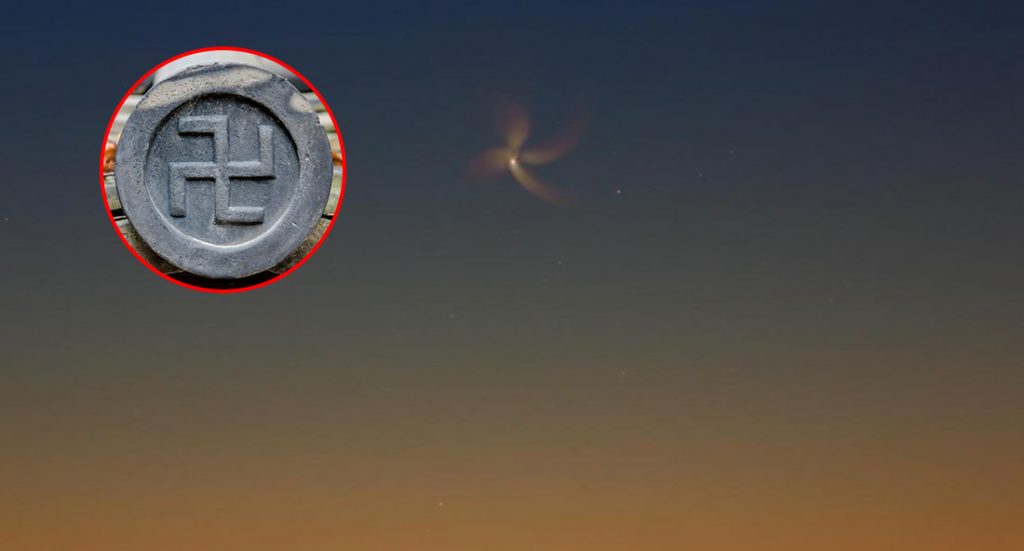
We still have a lot to learn about our history but, according to one theory, the Swastika symbol was inspired by the apparition of a comet in the sky.
In the book Cosmic Serpent by Victor Clube and Bill Napier, the authors offer compelling evidence that the Swastika may have been inspired by the apparition of a comet in the sky.
The authors reproduced a portion of the Han Dynasty Silk Atlas (from the Mawangdui Silk Texts) and indicate that some of these drawings mere most likely related to the breakup of the progenitor of comet Encke and the Taurid meteor shower.
Furthermore, as noted by Fred Whipple in his The Mystery of Comets (1985, page 163), Comet Encke’s polar axis is 5 degrees from its orbital plane, an ideal orientation to have presented a pinwheel-like symbol to our ancestors when comet Encke was much more active, resulting in a symbol we today recognize as the Swastika.
However, as pointed out by Carl Saga in his Book Comet (1985), The Swastika form is not a very different form from the pinwheel structures seen in many comets and brought out in short exposure photography with a large telescope. Comet Bennett 1970II is a recent example. Sagan notes that Comet Bennett, at least, the color of the pinwheel was yellow, implying that the structure is in the dust.
You look at these forms and perhaps you will grant at least that if enough spinning, jetting comets pass by the Earth, sooner or later there will be one that presents something like a swastika to view. But the argument alone is insufficient to convince you, or us, of a cometary origin for the symbol. For so speculative a subject, at least one piece of more direct evidence is needed.
Comet Encke is believed to have been responsible for the Tunguska event of 1908. It completes an orbit of the Sun once every 3.3 years. Encke was first recorded by Pierre Méchain in 1786, but it was not recognized as a periodic comet until 1819 when its orbit was computed by Johann Franz Encke.
Comet Encke is believed to be the originator of several related meteor showers known as the Taurids.
How Nazis Appropriated the Symbol

Keystone/Hulton Archive/Getty Images
The swastika provided the necessary link.
In the early 1870s, when German businessman and archaeologist Heinrich Schliemann thought he had discovered the ancient Greek city of Troy, more than 1,800 instances of the swastika were unearthed. Since the swastika was also present among the archaeological remains of the Germanic tribes, it didn’t take long for nationalists to jump to the conclusion that the Germans and the Greeks were both descendants of the Aryans.
And if you believe that Germans form a separate “race” superior to other ethnic groups around it, it becomes easier to claim that you need to keep that “race” pure. In that context, anti-Semitism followed.
The Thule Society, an anti-Semitic organization promoting the superiority of German Volk (folk in English), was founded at the end of the First World War. It used a stylized swastika as its logo. The society sponsored the fledgling Nazi party, and in a bid for greater public profile, the party created a banner that incorporated the swastika as we know it today.
Hitler was convinced that a potent symbol would rally the masses to his xenophobic cause. With a black swastika (called the Hakenkreuz in German, or hooked cross) rotated 45 degrees on a white circle set against a red background, the Nazi banner modernized the ancient symbol while evoking the colours of the recently defeated German empire.
In Mein Kampf, Hitler took sole credit for the design and attempted to give it meaning: “In red we see the social idea of the movement, in white the nationalistic idea, in the swastika the mission of the struggle for the victory of the Aryan man.” Tortured symbolism aside, the swastika banner did what it was supposed to do —it gave visual identity to the Nazi movement.
When the Nazis assumed power in 1933, they sought to unite the country behind their racist Aryan ideology, and the use of their symbol infiltrated all aspects of German life.
You can still see it sometimes, including in mosaic ceiling tiles at Hitler’s Haus der Kunst in Munich. The banner became the official flag of the country in 1935, and although it wasn’t everywhere as Hollywood might have you believe, it was very much present.
The Way Forward
How and why did so many diverse countries and cultures, across many eras, use the same symbol and apparently with the same meaning?
It is ironic, and unfortunate, that a symbol of life and eternity that was considered sacred for thousands of years has become a symbol of hatred.
But objects like the swastika do not have any inherent meaning; the symbolism is constructed by the people who use them. In our western society, the swastika is tainted. The Nazi movement’s violent crimes against humanity gave the Hakenkreuz a meaning that can’t be concealed or erased.
In places like Pointes-des-Cascades, where pre-Nazi swastikas exist, extra care must be taken to contextualize their presence. But in all other instances the symbol really must be shunned.
Its hate-filled racist intentions are clear. It wasn’t an innocent symbol for the Nazis, nor is it for latter-day neo-Nazis and white supremacists.
- https://theconversation.com/how-nazis-twisted-the-swastika-into-a-symbol-of-hate-83020
- https://www.ancient-code.com/researchers-find-the-swastika-predates-indus-valley-civilization/
- https://timesofindia.indiatimes.com/city/kolkata/Swastika-is-pre-Aryan-dates-back-11000-years/articleshow/53090079.cms
- https://www.ancient-code.com/the-birth-of-the-swastika-a-12000-year-old-symbol-inspired-by-a-comet/
- https://www.elitereaders.com/the-unknown-history-of-swastika/
- https://www.ufo-contact.com/ancient-swastika
- https://www.ancient-origins.net/myths-legends/symbol-swastika-and-its-12000-year-old-history-001312
- Mainstream Media Lies About America’s Economy - July 4, 2025
- Never Forget: The Sandy Hook Hoax - November 1, 2022
- Was the Diary of Anne Frank Just Another Jewish Lie? - October 29, 2022

